Healthy debate, contrarian points of view, and passion on all sides of an issue can lead teams to the best possible decisions and outcomes. It’s up to leaders to find the balance between conflict and harmony - and help each member of the team build their healthy conflict skills.
We had an opportunity to ask CIOs who recently won the 2021 National CIO of the Year ORBIE Awards about the role conflict plays on their teams. This is the first year that InspireCIO has brought prior ORBIE winners from chapters across the United States together to present the National ORBIE Awards, recognizing CIOs for their excellence in technology leadership.
Read on for advice from these award-winning CIOs on how to encourage the right kind of conflict on your team.
1. Pay attention to those who are not talking
Super Global CIO of the Year
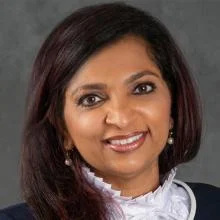
Mamatha Chamarthi, CIO, Stellantis: Innovation and disruption are born from healthy conflict. You need healthy conflict to generate a dialogue that brings out diverse perspectives and leads to rich contributions from the team. When we’re looking at informed-decision making, it's essential that every team member’s voice is heard, even if one person’s view might be a completely contrarian point of view.
Whereas healthy conflict can be an effective and important tool for a team to generate ideas and a leader to gain buy-in for decisions, unhealthy conflicts should be handled carefully. As a leader, you need to know when an objective conversation becomes personal and neutralize it. Any conflict that’s centered around one individual on the team should be addressed in a one-on-one setting, often accomplished by a simple comment like, “let’s take this offline,” when things are getting heated. Having these conversations with your team ensures that their voices are heard and helps them understand that they’re a part of the solution.
It’s also important to remember that if you’re just looking for agreement because you think you’re the only one in the room with all of the answers, your team will recognize that. They will no longer care to speak up, and when employees stop talking, that’s when disengagement happens. When you’re in a meeting, always go around the room to ask for different perspectives. Quietly observe who is talking and who is not, and gently invite everyone to the conversation; when an employee is quiet, it may mean they’re taking some time to consider, but it may also mean that they don’t feel comfortable expressing a point of view that is different from the group. It’s your job to actively encourage this dialogue, make people feel comfortable, and help them remember that any idea can be a million-dollar idea – and any healthy conflict can be the conversation that sparks transformation.
[ Get exercises and approaches that make disparate teams stronger. Read the digital transformation ebook: Transformation Takes Practice. ]
2. Know when to step away from tense debates
Global CIO of the Year
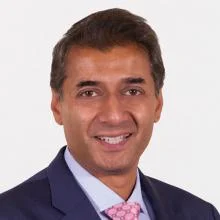
Donie Lochan, CTO, Invesco: Empathy, perspective, and sometimes just stepping away goes a long way to resolve conflict. When there is a difference of opinion, I ask team members to swap roles and “take the other side” to continue the debate. This approach not only lightens the mood but helps communicate both sides of an issue. In addition, I encourage teams to connect socially. The more you know your team members, the better you can relate to see their perspectives and proactively address concerns. Finally, when we struggle to resolve a conflict, I request teams pause, leave it on the table, and come back later. This provides time to mull things over and return with a more open mind. I challenge individuals to determine “do I want to be happy or right?” and consider if it is worth stubbornly sticking to your view versus looking more broadly at the solution for the greater outcome.
At Invesco, we utilize Amazon’s “two-way door” approach to empower teams to make quicker decisions. Many decisions are easily reversible, and for those, it’s ok to be wrong. If you don’t get the intended outcome, you can always open the door and return. By recognizing this sentiment upfront, teams reduce the time for debate and analysis and instead focus on execution. Teams become more successful when they learn from their mistakes and quickly reverse and iterate.
3. Think of your team as a rubber band to get the tension just right
Large Enterprise CIO of the Year

Kristie Grinnell, Global CIO, VP IT & SCM, GDIT: At GDIT, we have core values that drive our culture in everything we do: Honesty, Trust, Transparency, and Alignment. These values allow us to have healthy conflict on our team. We can openly trust one another to discuss hard problems, get to the root cause, and develop a solution to any problem. I actually encourage healthy tension on our team. You know you have it if you think of your team as a rubber band.
Without any tension, your rubber band (the team) can’t serve its purpose. If no one is willing to speak up or doesn’t feel comfortable doing so, the team has no tension – everyone is a “yes man.” On the other hand, if you have too much tension, your rubber band can start to fray and even snap. People yelling at one another, pointing fingers, and not working together to solve a problem but instead pulling against one another causes too much tension until the team breaks.
With honesty, trust, transparency, and alignment, you can create healthy tension and an environment in which people speak up, challenge a theory, or provide a new idea in a way that builds trust and aligns the team. Your team now has form and function - like a rubber band with the right amount of tension to serve its purpose.
4. Recognize and reward healthy conflict on your team
Enterprise CIO of the Year

Michael Mathews, SVP & CIO, Deluxe: First and foremost, our team recognizes that conflict is a natural and important dynamic within any high-performing team. We also recognize that the conflict must be healthy and respectful and that conflict born of best intentions leads to better, more productive discussions and higher quality outcomes. To that end, we ensure everyone in the discussion has adequate and sufficient space and time to share their views and perspectives. We unpack ideas and differences, seeking to understand each other’s points of view and the experiential lens through which the issue(s) are being evaluated, and then work collaboratively in the spirit of best serving our customers (external and internal) to reach the best decision and path to resolution. In the end, and most importantly, we are a team; so, when we work through the conflict and land on a course of action or decision, we all align, rally, and go into full-on execution mode as one team, with one agenda.
Recognize that each team member brings a unique set of experiences, ideas, and beliefs to every conversation and decision. As a leader, you need to be acutely aware of when and how team members engage in conflict and the behaviors that precede and follow such discussions. Encourage team members to participate and share their ideas; candidly and directly elicit their honest and important views on the matters, even when the topics may be challenging and the conflict intense, and especially if the team member may be more quiet or prone to avoid the heat of the debate. Recognize and reward important behaviors, tone, style, and culture that foster healthy conflict, intellectual curiosity, and collaborative resolution. In the end, my best and most simple recommendation is to allow healthy conflict to exist within your teams. It’s a very natural and necessary ingredient to create high-performing teams.
[ Unsure which kind of conflict is bubbling up on your team? Read How to use conflict to build stronger IT teams for tips on how to identify healthy versus unhealthy conflict ]
5. Focus on collective outcomes, not individual success
Large Corporate CIO of the Year
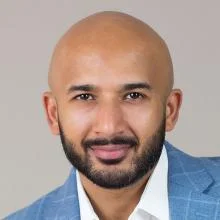
Usman Waheed, Former Chief Information & Technology Officer, Knoll: Successful organizations and transformations are built on a foundation of collaboration, respect, diversity, and innovation at the core of its culture and values. Unhealthy conflict is not productive, whereas disagreement and respectful dialogue are critical and healthy for innovative organizations and communities.
Building a diverse workforce is the first step in building a robust culture that drives innovation and growth. More important is to enable these diverse teams to effectively collaborate and engage in a respectful dialogue. Teams must focus on collective outcomes and not just on an individual’s success. At Knoll, we built a diverse workforce and transformation team with a common vision and business goals. We manage conflict with open communication, sharing new ideas, documenting options, risks, cost, pros, and cons, and making informed data-driven decisions.
Conflicts can occur and require immediate corrective action by leaders, so building credibility as an exemplary leader with deep relationships within the organization is necessary. By putting the team first and building a reputation for unbiased, fair yet firm decision-making, leaders can manage conflict before a toxic work environment develops.
6. Use conflict to make the best decisions
Corporate CIO of the Year
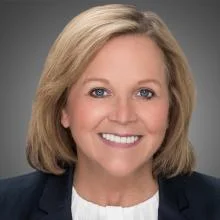
Joan Kuehl, EVP & CIO, Elevate Credit, Inc.: It is very important to listen to all team members and create an environment where everyone feels comfortable and respected. We focus our conflict resolution on decision-making and not allowing it to become personal. I don’t allow triangulation in this process. If someone on the team has an issue with another team member, I ask if they’ve tried to resolve the conflict face to face – not via email, which can lead to miscommunication. If they’ve met and still can’t resolve the conflict, the three of us will meet and talk through all sides of the question to try to reach the optimal resolution.
I not only encourage healthy conflict, but I also tell my leadership team that I expect them to be very open when they disagree or have a different opinion. We practice this approach when leaders on our team don’t agree with a position that I have proposed or another leader has taken. We meet as a leadership team and strive to consider all viewpoints to reach the best conclusion. I tell my team that our leadership meetings are the time to argue our positions passionately. One of the most dangerous things an organization can face is groupthink, so we utilize healthy conflict to push ourselves to the best decisions. Once we’ve heard all facts and opinions, we typically reach a consensus. If we can’t come to a consensus, I’ll make the decision. My leadership team understands that once a decision is reached, I expect them to fully support it outside of the room, and we agree that we won’t revisit the decision unless meaningful new information arises.
7. Show by example that vulnerability leads to trust
Healthcare CIO of the Year
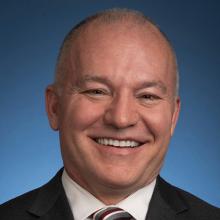
Craig Richardville, SVP, Chief Information & Digital Officer, SCL Health: One of Stephen Covey’s 7 Habits of Highly Effective People is to "seek first to understand, then to be understood." I find this rule valuable in times of conflict. My role is to facilitate the openness and transparency of the team to listen first and truly comprehend the thoughts and intentions of the conflict in order to best ensure that one can see the different perspectives from others’ lenses. In doing so, all parties involved arrive at a better place than each one independently.
The best way to achieve this is to create an environment and a culture of trust. Ensure there is a safe place for varying opinions and thoughts and allow the team to mature in problem-solving and conflict resolution. When you create this environment, and you participate yourself, it shows others that being vulnerable and open will ultimately beget the best outcome. In healthcare, answering the question, “What is best for the patient?” will provide the right answer.
8. Develop listening skills across your team
Nonprofit/Public Sector CIO of the Year

Tanya Hannah, CIO, King County, WA: Dysfunctional teams do not create, deliver, or sustain business value. Teams typically reflect the microcosm of company culture and values. By leading with the mission and tethering talent to purpose, teams can embrace the friction that arises when smart, creative people seek solutions for the most pressing business challenges.
For teams to thrive and the best ideas, products, or services to emerge, environments need free-flowing conversations that respect different viewpoints and work styles that often lead to collaboration, effectiveness, and engagement. These qualities are seen in high-performing teams – whether in sports or business. Work relationships matter. Undervalued or unvalued members will have nothing to say or contribute. It’s about the question – who wouldn’t want to be a part of this?
Successful teams know that conflict is good for spurring innovation and delivering results. Characteristics of successful teams include seeing the big picture, having shared goals and defined roles, and recognizing contributions of all members as key elements. Celebrating success, regrouping after setbacks, or dealing with failures – that's how teams continue to grow and adapt to deliver results.
So how do teams get there? Listening – an under-appreciated skill - builds trust and patience to let others fully explain an idea, the skill to remain both skeptical yet open to another approach. It allows people to actively discuss and go at a challenge again and again, listening to each other, probing the problem, pushing for facts or data that support a particular position. Culture – what binds teams together – matters.
[ Culture matters. Download the Ebook: The IT executive's guide to building open teams for advice on how to develop an organizational culture that fosters innovation and keeps teams unified. ]






